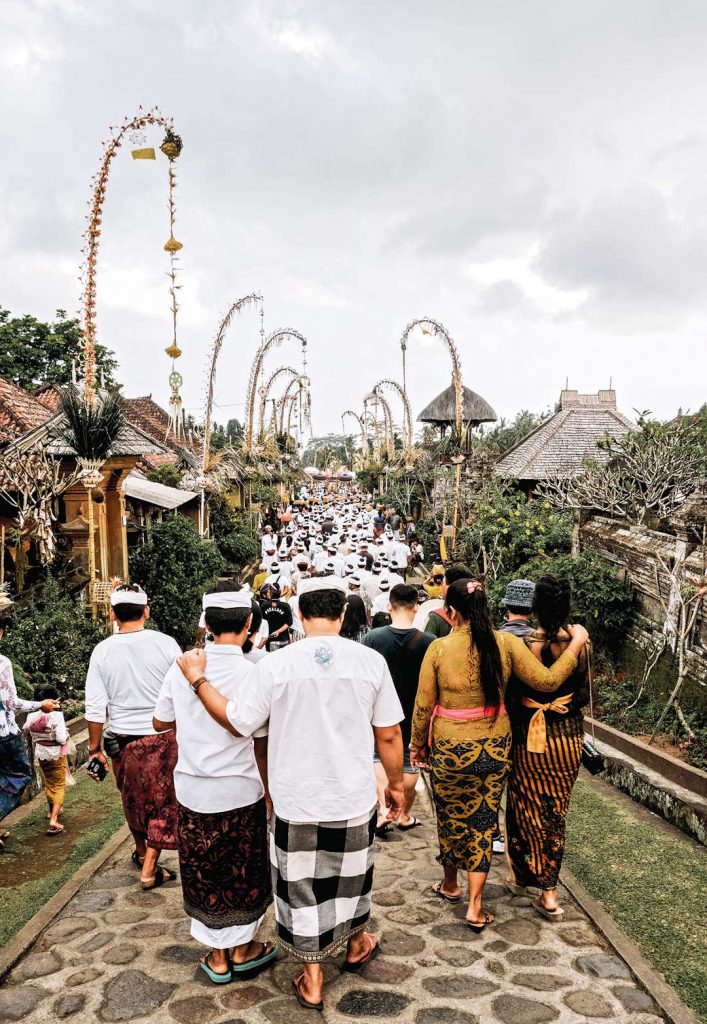The Galungan and Kuningan ceremonies are the most important religious celebrations of the Balinese pawukon calendar. The ‘Galungan Days’ refers to the ten days of festivities, starting from Galungan and ending on Kuningan, celebrated on a cycle of 210 days. This 19-29 February, prepare for a festival of colours as the Balinese Hindu bring these auspicious days to life.

Galungan will be held on the 19th of February, but even before this the streets will already be prepared. The first signs of this special day are the penjor, beautifully decorated bamboo poles that line every street. Penjor are symbolic: its arching top represents Mt Agung, its long trunk represents a river that flows down to the oceans and a sanggah or shrine is at its base where offerings are placed.
On, Galungan, deified ancestors come down to our earthly realm from their spiritual abodes – they thus must be welcomed with entertainment (music and dance), prayers and offerings. Offerings of food are aplenty, with rice cake snacks, or jaja; traditional mince, or lawar; and sate lilit being specially prepared for the occasion.
Importantly, Galungan also symbolises the triumph of good (dharma) over evil (adharma), sparked by the myth of Mayadenawa. The son of a benevolent king, he was said to have ravaged Balinese villages, destroying temples and festivals in an effort to impose Mahayana Buddhism (seen as godless and thus atheist) upon the land. The Hindu’s called upon the god Indra, who fought and killed Mayadenawa. His death took place on the Wednesday of the 11th week of the pawukon calendar, which is when Galungan is held. In this story, Indra symbolises Hinduisum, good, dharma, whilst Mayadenawa symbolises evil, atheism and adharma.
Kuningan marks the end of the ‘Galungan Days’, taking place ten days after (29 February) and is when all the ancestors return to their realm. Similar festivities take place, although most notable is that the offerings will use yellow rice (‘kuning’ meaning yellow) and many Balinese will don yellow traditional attire.The Galungan Days are a great time to be in Bali, to see the island in full festive spirit and witness the colour and life the Balinese Hindu put into their rites.






